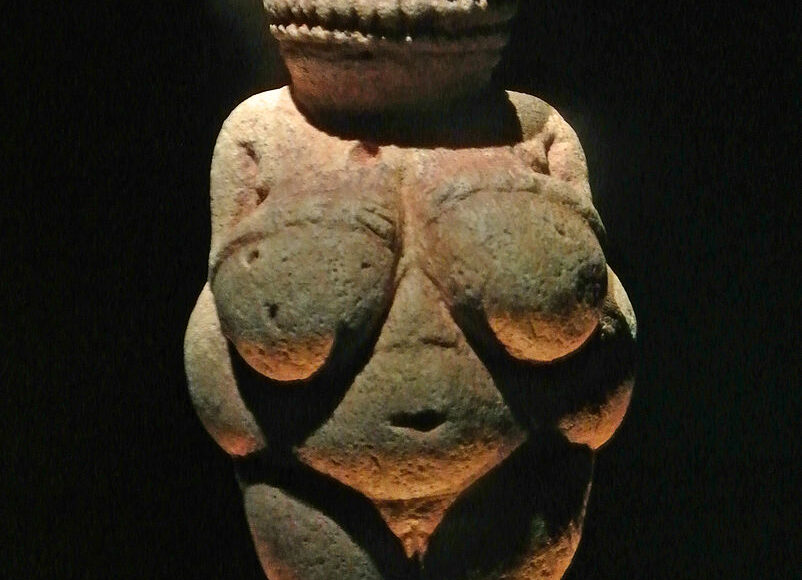Imagine an ancient world where women were equal in status and influence to their male counterparts amongst their tribes. A world in which female bodies were praised instead of put down and worshipped for their life giving resources. Sounds unbelievable right? That’s because it probably never happened.
The lack of anthropological evidence for any prehistoric matriarchal hierarchy is damning enough. The little information we do have about prehistoric societies is often interpreted with different biases and has always been hotly debated. Even with the usage of modern technology, like the archaic DNA analysis which found evidence of a potential matrilineal connection between some buried elites of the prehistoric society in the Chaco Canyon, the evidence is still quite contentious without any recorded form of history. While the Chacoan site testing did prove significant matrilineal connections between six of the nine bodies that were able to be analyzed, the discovery still does not prove any sort of reverence for women within Chacoan society. In fact, the most richly buried figure in the Chacoan tomb was still a male, who was centered in the crypt with thousands of turquoise beads surrounding him. This tomb proves the possibility of matriliny in one ancient society, not matriarchy as the norm in all prehistoric peoples. Not only is there inadequate proof for the myth of prehistoric matriarchy, but believing in this notion is not innocent because of its incredibly detrimental effects on the future of womankind.
Stories of matriarchal and women-centric societies have swirled around since the time of the ancient Greeks. The idea of a prehistoric matriarchal society really took hold in the 1800s, when certain artifacts, like the Venus statues from the Upper Paleolithic Era, were excavated in Europe and caused quite an alteration in previous conceptions. Since then, the myth of women-ruled societies has taken ahold of the anthropological and cultural world. At first, male anthropologists like Johann Bachofen were convinced of ancient matriarchal societies by vague interpretations, and viewed the move into patriarchy as a necessary evolution to become more civilized. However, in the 1970s during the second wave of feminism, many were convinced that there must be a conversion back to this “gynocratic age” to quote celebrated feminist Gloria Steinem. In this age, according to Steinem, women were supposedly revered for their mystical power to give birth and their bodies were seen as the center of life. In one of her most famous articles, Steinem even perpetuated the belief that there was a time when no one knew pregnancy was caused by sexual intercourse. She claimed that women were worshipped as connected to Mother Earth, since it was thought that their bodies naturally bore children like trees bore fruit. And when the concept of paternity, or the active involvement of the man in childbirth, was finally “discovered,” the idea of paternal ownership and the subjugation of women’s bodies began. From this absurd belief sprang the Mother Goddess Cult, whose members called for the return of the gynocratic age with females as the superior sex. They advocated that since women were empathetic nurturers who were naturally connected to the Earth as mothers, they could restore harmony and ecological balance to the world better than any male leader.
So why are this theory and the Mother Goddess Cult so injurious to modern feminism?
To answer this question we can turn to the work of Cynthia Eller in her third book entitled The Myth of Matriarchal Prehistory. Eller, once a student herself of the feminist ecological agenda that the Mother Goddess following provided, realized that the evidence of a women-ruled ancient epoch quickly became dubious under scrutiny. After reading Eller’s work, as well as many reviews from sources like the National Association of Scholars and the New York Times, one can see how harmful the myth of prehistoric matriarchy may be to modern women. Firstly, believing such misinterpretations of the little prehistoric remnants we do have leaves us wholly open to effortless dispute and contradiction. Secondly, and more importantly, the idea of a matriarchal society and a Mother Goddess confines women to the archetype of creator and nurturer through the uncontrollable fact of their biological makeup. While initially this may not sound so bad, this theory creates boundaries between the roles of men and women, only allowing a woman’s value to be defined by birthing and nurturing ability. Ironically, the detriments of the theory can be clearly seen in the 1970s emphasis on the Venus of Willendorf as a feminist icon and proof of the prehistoric matriarchy. The statue itself is not even that feminine, it was just thought to be because of its protruding belly and chest. Somehow, that automatically meant the statue was made for the worship of fertility and was the depiction of a pregnant woman. While “feminist” believers in prehistoric matriarchy claim this is an example of the admiration of womenkind, they are really just perpetuating the binary that confines women as mothers versus as actual independent individuals. Although the myth of prehistoric matriarchy may at least function in a semi-positive way, in which it celebrates the female body and its functions, it still ultimately serves patriarchal interests by restraining women to the same conventional role of a mother. Real or not, the conception of a prehistoric matriarchal society and the cult of the Mother Goddess must be abandoned for the good of modern feminism.
Audrey Hong is currently a sophomore at Colgate University, where she is double majoring in Art History and English. Both her parents are currently in education, and she plans to follow their footsteps by spreading knowledge and leading open discussions about the topics she thoroughly enjoys.
